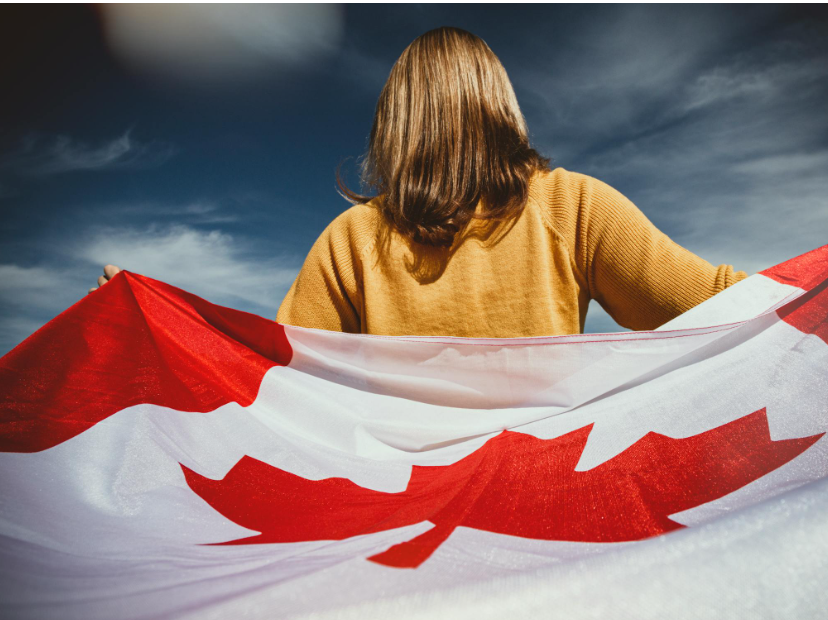
About CANADA

Canada is the second-largest country in the world by land area, known for its diverse landscapes, rich cultural heritage, and high quality of life. Canada is known for its stunning and diverse landscapes. Here are some highlights:
Regions:
Northern Canada: The territories of Yukon, Northwest Territories, and Nunavut feature vast wilderness, tundra, and unique Indigenous cultures. The Northern Lights (Aurora Borealis) are a spectacular sight in these regions.
Western Canada: Home to the Rocky Mountains, British Columbia features breathtaking scenery with coastal rainforests and rugged mountains. National parks like Yoho and Glacier are popular for hiking and wildlife viewing.
Prairie Provinces: Alberta, Saskatchewan, and Manitoba have vast open spaces, grasslands, and agriculture. The Canadian Badlands in Alberta showcase unique rock formations and fossils.
Central Canada: Ontario and Quebec are characterized by large urban centers like Toronto and Montreal. The Great Lakes region offers beautiful shorelines and vibrant ecosystems.
Atlantic Canada: The provinces of New Brunswick, Nova Scotia, Prince Edward Island, and Newfoundland and Labrador are known for their picturesque coastlines, seafood, and maritime culture. The Cabot Trail in Nova Scotia is particularly famous for its stunning ocean views.

Provinces:
Canada has ten provinces and three territories, each with its own distinct characteristics. Here’s an overview of each province:
- Alberta
- Capital: Edmonton
- Highlights: Known for the Rocky Mountains, Banff and Jasper National Parks, and its oil industry. Calgary hosts the famous Calgary Stampede.
- British Columbia
- Capital: Victoria
- Highlights: Known for its stunning natural landscapes, including mountains, forests, and coastline. Vancouver is a major city with a vibrant cultural scene.
- Manitoba
- Capital: Winnipeg
- Highlights: Known for its diverse culture and Indigenous heritage. The province has beautiful parks and is home to the historic Forks Market.
- New Brunswick
- Capital: Fredericton
- Highlights: Features beautiful coastal areas, including the Bay of Fundy, known for having the highest tides in the world. The province has rich Acadian culture.
- Newfoundland and Labrador
- Capital: St. John’s
- Highlights: Known for its rugged coastline, unique culture, and historical significance as one of the first points of European contact in North America.
- Nova Scotia
- Capital: Halifax
- Highlights: Known for its maritime history, beautiful coastline, and delicious seafood. The Cabot Trail offers breathtaking views.
- Ontario
- Capital: Toronto
- Highlights: Canada’s most populous province, home to major cities like Toronto and Ottawa (the capital of Canada). Features the iconic Niagara Falls and diverse cultural attractions.
- Prince Edward Island
- Capital: Charlottetown
- Highlights: Known for its red sand beaches, rolling countryside, and as the inspiration for “Anne of Green Gables.” It’s Canada’s smallest province by land area.
- Quebec
- Capital: Quebec City
- Highlights: A predominantly French-speaking province with a rich history and unique culture. Montreal is a cultural hub known for its festivals, food, and arts scene.
- Saskatchewan
- Capital: Regina
- Highlights: Known for its prairies, agriculture, and Indigenous culture. The province has many beautiful parks and natural areas.
Territories
- Northwest Territories
- Capital: Yellowknife
- Highlights: Known for its vast wilderness, including Great Slave Lake and Nahanni National Park. It has a rich Indigenous culture.
- Nunavut
- Capital: Iqaluit
- Highlights: Canada’s largest territory, characterized by its Arctic landscapes, unique wildlife, and Indigenous Inuit culture.
- Yukon
- Capital: Whitehorse
- Highlights: Known for its stunning landscapes, including mountains and rivers. The territory has a rich history tied to the Klondike Gold Rush.
History of Canada:
Canada’s history is rich and complex, shaped by Indigenous cultures, European colonization, and the development of a unique national identity. Here are some key events and milestones:
Indigenous Peoples:
- First Nations, Inuit, and Métis: Indigenous peoples have inhabited Canada for thousands of years, with diverse cultures, languages, and traditions. They developed rich societies and established trade networks long before European contact.
European Exploration and Colonization:
- Viking Exploration (c. 1000): Norse explorers, led by Leif Erikson, are believed to have reached the area of Newfoundland, establishing a settlement known as L’Anse aux Meadows.
- French Colonization (1534): Jacques Cartier claimed land for France, leading to the establishment of New France, with Quebec City founded in 1608 by Samuel de Champlain.
- British Colonization: Following the Treaty of Utrecht in 1713, Britain gained control over parts of New France. By the 1760s, the British had taken over most of Canada.
Key Historical Events:
- Seven Years’ War (1756-1763): This conflict between Britain and France ended with the British victory and the Treaty of Paris, which ceded Canada to Britain.
- American Revolution (1775-1783): Loyalists fleeing the American Revolution settled in Canada, significantly influencing its demographics and culture.
- Confederation (1867): On July 1, the British North America Act united the provinces of Ontario, Quebec, New Brunswick, and Nova Scotia into the Dominion of Canada. This marked the beginning of Canada as a self-governing entity.
Expansion and Development:
- Western Expansion: The late 19th and early 20th centuries saw the incorporation of the western provinces (Manitoba, Saskatchewan, Alberta, and British Columbia) and the establishment of the Canadian Pacific Railway, which connected the country.
- Indigenous Rights Movement: Throughout the 20th century, Indigenous peoples advocated for rights, land claims, and recognition of their cultures. This led to significant legal and political changes, including the establishment of land treaties.
Modern Era:
- World Wars: Canada played significant roles in both World War I and World War II, which helped foster a sense of national identity and independence from Britain.
- Patriation of the Constitution (1982): Canada gained full sovereignty over its constitution with the Constitution Act, which included the Charter of Rights and Freedoms, guaranteeing individual rights and freedoms.
Recent Developments:
- Truth and Reconciliation: In recent years, Canada has focused on addressing historical injustices faced by Indigenous peoples, including residential schools and land claims.
- Cultural Diversity: Canada is recognized for its multiculturalism, with ongoing efforts to embrace and celebrate the diverse backgrounds of its citizens.
Lifestyle in Canada:
Canada’s lifestyle is influenced by its diverse culture, geography, and climate. Here are some key aspects:
Daily Life:
- Work-Life Balance: Canadians typically value a good work-life balance, with a strong emphasis on family and leisure time. Many enjoy outdoor activities and community events.
- Education: Canada has a high-quality education system, with public schooling available from kindergarten through secondary school. Higher education is also accessible, with many renowned universities.
Food and Cuisine:
- Diverse Influences: Canadian cuisine reflects its multicultural society. You’ll find influences from Indigenous, French, British, and immigrant communities.
- Signature Dishes: Some popular foods include:
- Poutine: Fries topped with cheese curds and gravy, originating from Quebec.
- Butter Tarts: Sweet pastries filled with a sticky mixture of butter, sugar, and eggs.
- Maple Syrup: Canada is the world’s largest producer, often enjoyed on pancakes and waffles.
Outdoor Activities:
- Nature and Recreation: With vast natural landscapes, Canadians love outdoor activities such as hiking, skiing, snowboarding, kayaking, and camping.
- Sports: Ice hockey is a national passion, but other sports like lacrosse, football, and basketball are also popular. The country hosts many sporting events and has a strong tradition of community sports.
Festivals and Events:
- Cultural Celebrations: Canada hosts numerous festivals celebrating its diverse cultures, such as:
- Carnevale de Québec: A winter festival featuring ice sculptures and parades.
- Toronto International Film Festival (TIFF): One of the largest film festivals in the world.
- National Indigenous Peoples Day: Celebrates Indigenous cultures across the country.
Healthcare and Social Services:
- Universal Healthcare: Canada has a publicly funded healthcare system that provides essential medical services to all residents. This system emphasizes access to healthcare regardless of income.
- Social Services: The country has various social programs, including unemployment insurance and child benefits, aimed at supporting citizens in need.
Urban vs. Rural Living:
- Cities: Major urban centers like Toronto, Vancouver, and Montreal are vibrant and multicultural, offering diverse dining, entertainment, and cultural experiences.
- Rural Areas: Life in rural Canada is often quieter and community-focused, with strong connections to agriculture and nature.
Education in Canada:
Canada boasts a high-quality education system that is publicly funded and highly regarded worldwide. Here’s an overview of its key components:
Structure of the Education System:
- Early Childhood Education
- Preschool/Kindergarten: Many provinces offer preschool programs for children aged 3-5, with full-day kindergarten available in some areas.
- Primary and Secondary Education
- Elementary School: Typically covers grades K-6, focusing on foundational skills in literacy, numeracy, and social studies.
- Secondary School: Covers grades 7-12 (or 9-12 in some provinces). Students take a range of subjects, and upon completion, they receive a high school diploma.
- Post-Secondary Education
- Colleges: Offer diploma and certificate programs focused on practical skills and job readiness. They may also provide transfer programs to universities.
- Universities: Offer undergraduate and graduate degree programs. Canada has many renowned institutions, such as the University of Toronto, McGill University, and the University of British Columbia.
Educational Governance:
- Provincial Responsibility: Education is primarily under provincial jurisdiction, meaning curricula and policies can vary significantly across Canada.
- Language of Instruction: Most schools are English-speaking, but there are also French immersion programs and schools, especially in Quebec.
Quality and Accessibility:
- Public Funding: The education system is funded through taxes, ensuring that education is accessible to all Canadians without tuition fees at the elementary and secondary levels.
- Quality: Canadian students consistently perform well in international assessments, such as the Programme for International Student Assessment (PISA).
Special Education:
- Inclusion: Canadian schools strive to be inclusive, offering support for students with special needs through tailored programs and resources.
Lifelong Learning:
- Adult Education: Many provinces offer adult education programs for those seeking to complete their high school diploma or pursue further training and education.
Challenges and Initiatives:
- Indigenous Education: Efforts are ongoing to improve educational outcomes for Indigenous students, including culturally relevant curricula and support services.
- Equity: There is a focus on ensuring equitable access to quality education for all, particularly in underserved communities.











